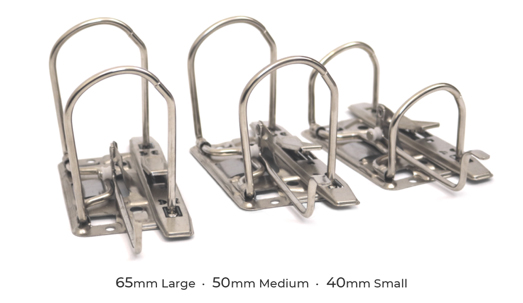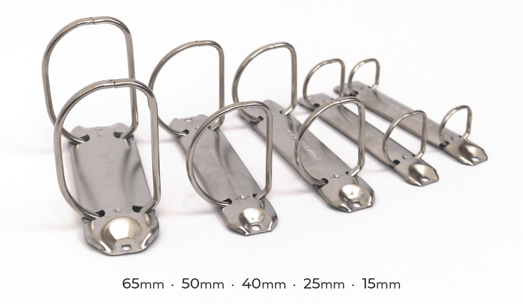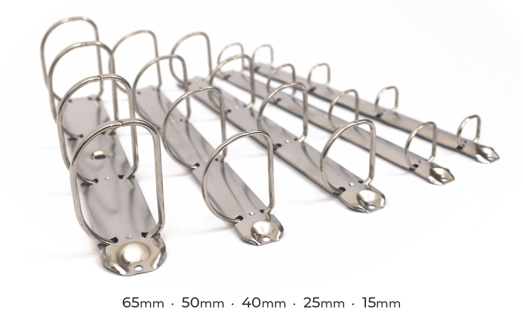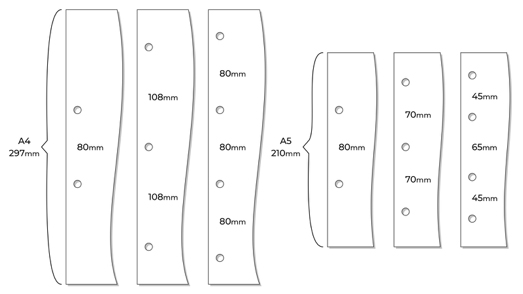Ring Binder Mechanisms
Mechanisms
At Duraweld, we use three different mechanisms when it comes to our ring binders: D Ring, O Ring and Lever Arch.
In this article, we’ll break down: what the different mechanisms look like, what they’re best used for and how they’re sized. For simplicity, we’ve only included the three most commonly used mechanisms. As a specialist ring binder manufacturer, if there is a mechanism you require our sales team is more than happy to help discuss your needs further.

Style and Shape
‘D’ Ring
The D-ring named as it is shaped like a backwards ‘D’ is by far the most popular shape of mechanism we supply, with the flat edge keeping your paperwork in a neat flush stack.
The mechanism is fitted into the back cover, with the rivets less noticeable and keeping the spine clear for artwork and print. This also allows the front cover to be opened and closed without moving your documents, as found when using the O-ring, minimising any pull and tear along the punch holes of your contents.
This shape of ring is suitable for the majority of ring binders; archiving, presentation, display books, handbooks, training manuals, reference materials, student notes and more.
‘O’ Ring
The O-ring or round mechanism, named because of its O like shape, is usually fitted into the spine of the ring binder. This type of mechanism is best suited for easel binders as its spine fixing location allows the pages to turn easily. Any print or pockets on the spine will have to be designed to avoid the rivets.
Lever Arch
Lever arch mechanisms are fitted into the back cover of the binder. The lever action allows it to be opened and closed easily allowing for quick and easy organisation of your contents.
This style of mechanism is often supplied with a compressor bar that allows the document stack to be clipped securely to minimise movement. Like the D-ring it has a flat edge providing the same benefits.
This style of mechanism is often favoured by legal and account firms or departments due to the increased capacity as well as its ease of use.

How we measure
Two key measurements of any mechanism are its capacity and ring spacing, measured in millimetres.
- We measure the capacity based on the gap between the mechanism base plate and the usable vertical length of the ring before it curves around at the top.
- The ring spacing is the distance between the rings of the mechanism with various standards utilised across the wide range of mechanisms available. This spacing can also be referred to as the hole punch spacing.
A ring binder’s capacity can easily get confused with the size of the spine which is larger to fit round the mechanism. One way to think of it is;
- The capacity is how much the binder can hold.
- The spine size is how much space it takes up on the shelf.








